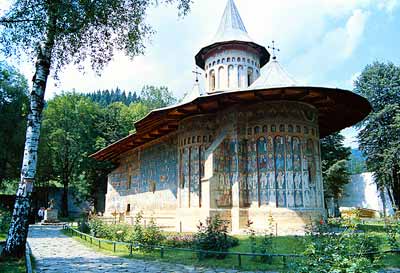 Voronet |
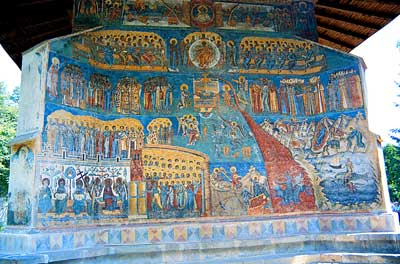 The Last Judgement |
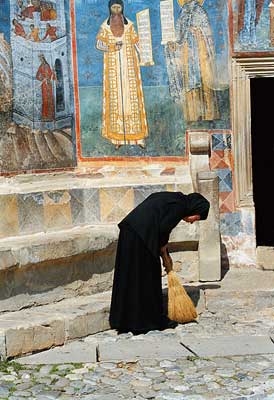 A nun sweeps up |
The painted monasteries are all surrounded by stout walls, and bear more than a passing resemblance to military forts, and for good reason. They were mostly built during a time when Moldavia was suffering frequent Turkish invasions. The fortified monasteries were built to house local armies in a reasonably secure enclosure, and the walls were painted with scenes of religious stories to educate and entertain the largely illiterate soldiers and peasants.
 Voronet |
 The Last Judgement |
 A nun sweeps up |
"The Last Judgement" mural, which occupies the entire west wall, is considered to be the most famous from all the painted monasteries. On the left side, St. Peter escorts the believers, while on the right, Moses is pointing a group of nonbelievers towards the long, red chute to the Nether Regions. The group that makes up the "sinners" reflects the politics of the time it was painted. It is made up of Jews, Turks, Tartars, Armenians, and Africans.
|
Visitors to Romanian monasteries are not allowed to wear short pants or short skirts, and so those who show up in such clothing are required to don a sort of wrap-around skirt that ties on at the waist |
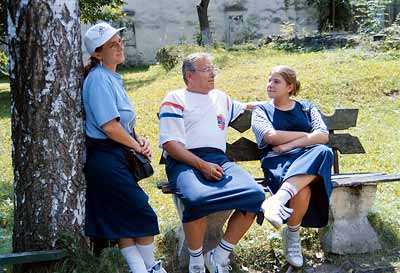 Monastery chic. Didina, Radu, and Lucy in their monastery skirts. |
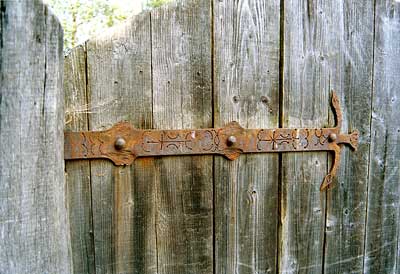 Ironwork on the gates to the Voronet cemetery |
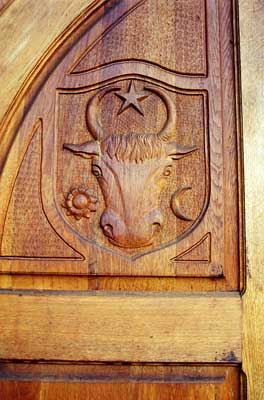 Woodwork on the main gates of Voronet. The buffalo is the symbol of Moldavia. |
PAGE: 1 | 2 | 3 | 4 | 5 | 6 | 7 | 8 | 9 | 10 | 11 | 11 | 12 | 13 | 14